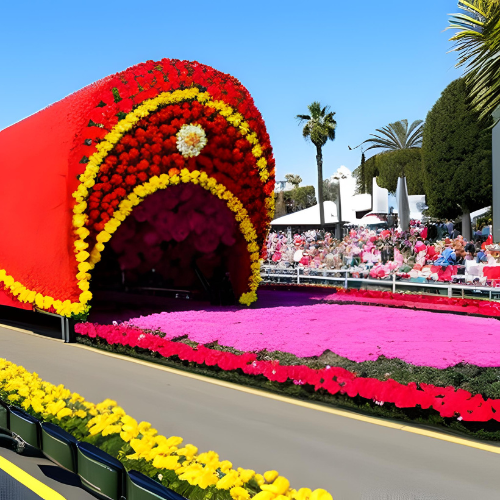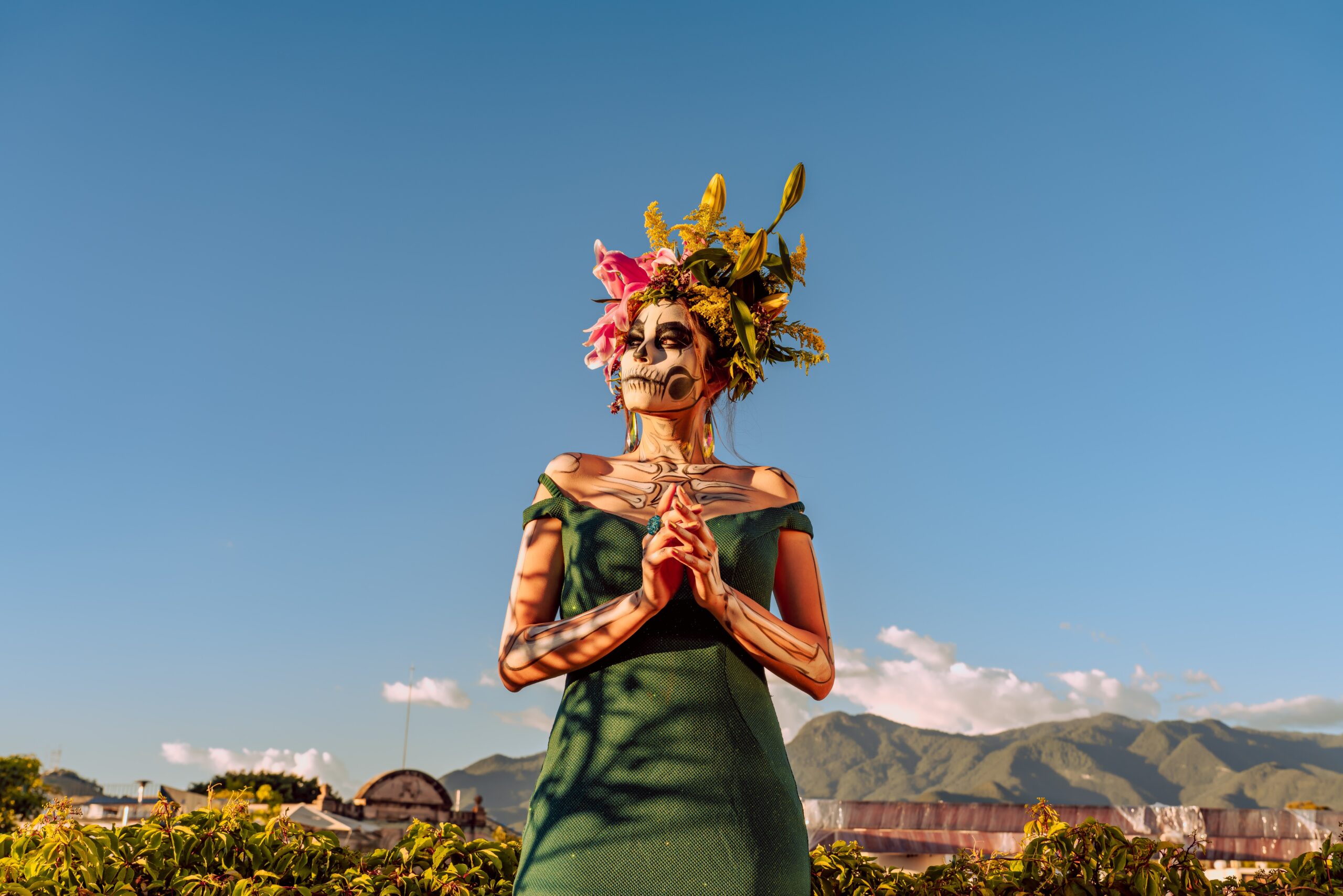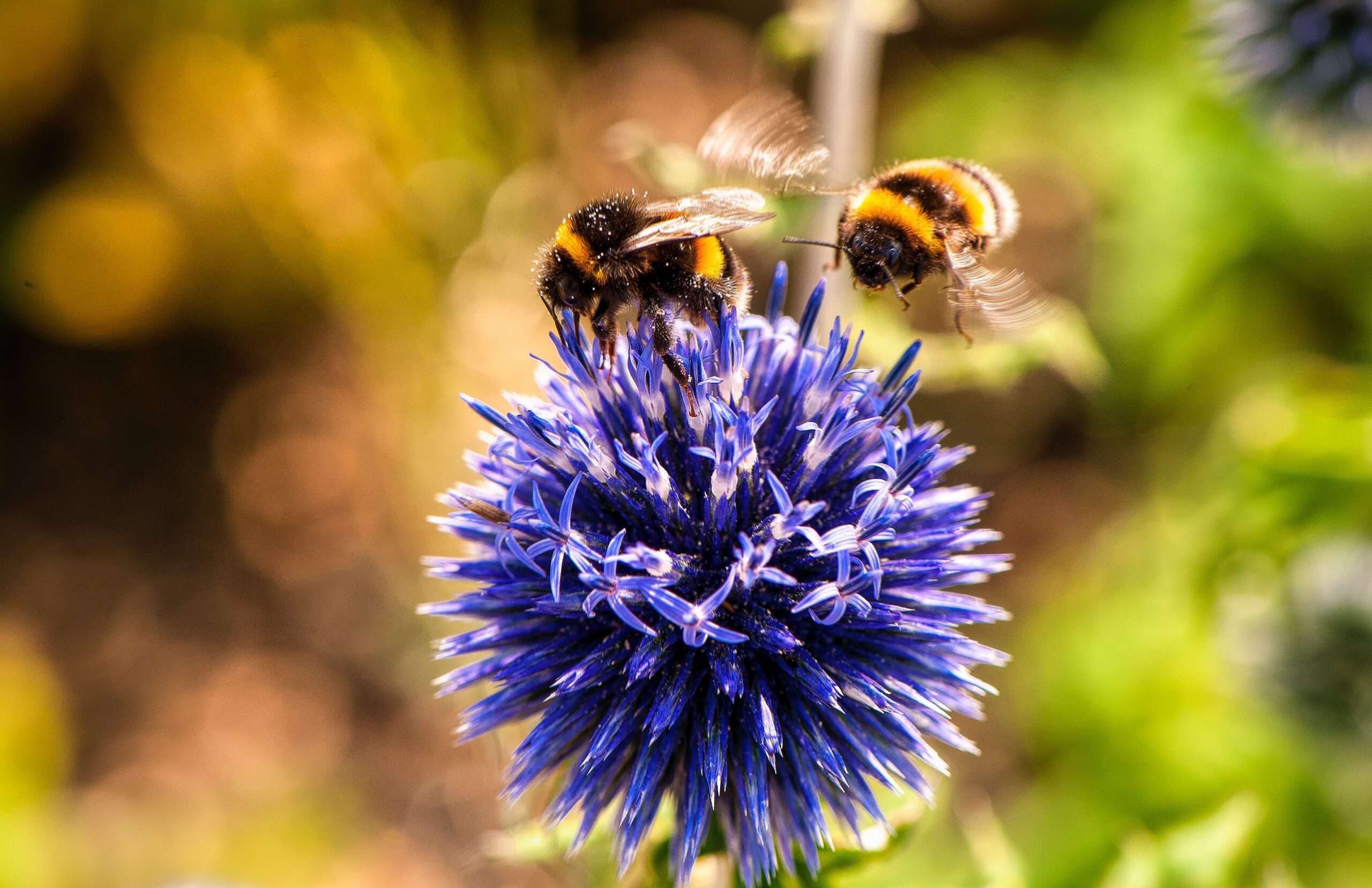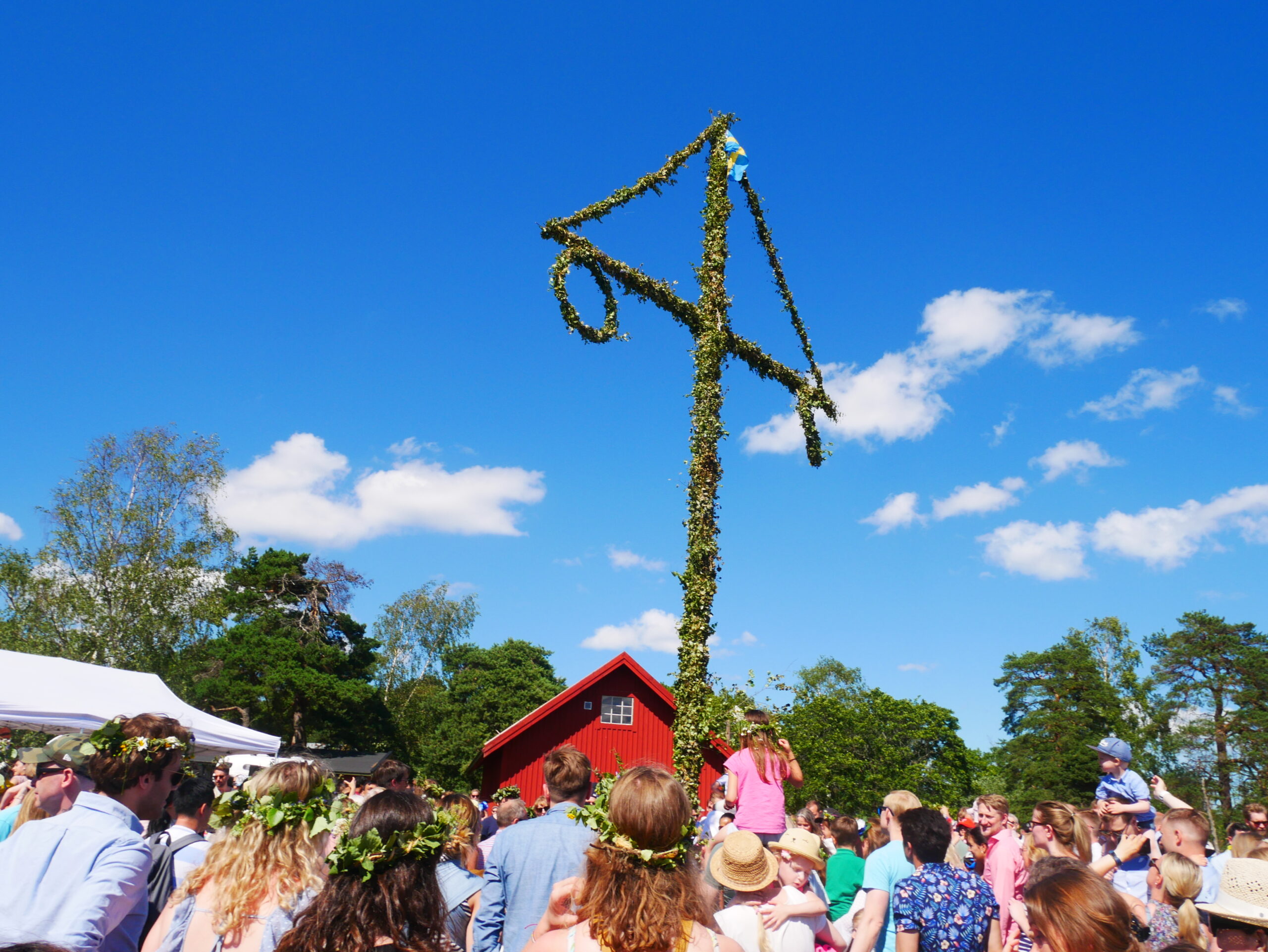As the clock ticks over and a new year dawns, there’s a cherished tradition that we, the people of the United States, and viewers from around the world, eagerly anticipate. I’m talking, of course, about the annual Rose Parade in Pasadena, California. This remarkable spectacle has been a steadfast part of our New Year’s Day since the late 19th century. For us, it’s not merely a parade – it’s a festival of life, a celebration of community spirit, a spectacular display of innovation, and a proud testament to the human will to keep traditions alive. Today, let’s delve into the fascinating history and evolution of the Rose Parade in Pasadena.
The Blooming of an Idea (1880s – 1890)
Imagine, if you will, the year is 1890. The picturesque city of Pasadena, California, is blessed with a Mediterranean climate that is the envy of many, especially those enduring the bitter winters of the East Coast. A group of former residents from the Midwest has founded the ‘Valley Hunt Club’ with the main purpose of promoting the city’s charm and, in their words, “to hunt the fox across the San Gabriel Valley”.
However, hunting foxes was not the only thing on the members’ minds. They contemplated a way to showcase the bounty of midwinter flowers and the pleasant weather of their new abode to their friends and families back east. An idea started to form, an idea as bright as the California sunshine, an idea that would bloom into one of the most cherished traditions of the United States – the Tournament of Roses Parade.
A club member, Charles Frederick Holder, suggested the first parade on January 1, 1890. It was nothing more than a small-town festival back then, a modest affair with horse-drawn carriages adorned with colorful blooms, foot races, and a polo match. But the seed was planted, and the history of the Rose Parade had begun. The festival was an instant success, drawing over 2,000 spectators to Pasadena’s leafy streets.
Who would have thought, in those early years, that this humble celebration of flowers and sport would evolve into an internationally renowned event attracting millions of spectators each year, both in person and on television? But that’s exactly what happened. The Rose Parade became not only a parade but also an emblem of community, perseverance, and creativity. The birth of this tradition showcases how even simple ideas, when nurtured with love and passion, can blossom into something grand and timeless.
The Parade Finds Its Footing (1891-1900)
The remarkable success of the inaugural Rose Parade gave momentum to the annual tradition. The Valley Hunt Club members realized the potential of their flower-festooned spectacle and, in 1895, decided to let others share the responsibility of organizing this event. The Tournament of Roses Association was formed, an entity that remains responsible for the Parade’s organization to this day.
The ’90s saw the parade growing both in size and popularity. This period of the Rose Parade’s history was characterized by the introduction of new traditions and the consolidation of its status as a staple of Pasadena’s culture.
One such tradition was the selection of the parade’s royal court in 1890, which added a hint of grandeur to the proceedings. In the beginning, the court consisted only of a Queen, selected from Pasadena’s young women. However, in the years to follow, a full court, including princesses, was established.
Yet another feather was added to the Parade’s cap when the first-ever float made entirely of flowers was introduced in 1893. This was no simple feat. Creating these artistic spectacles required time, patience, skill, and thousands of blooms. These grand floral floats instantly captivated the attendees and became an integral part of the Rose Parade, evolving into the extravagant displays we marvel at today.
In 1895, the parade stepped onto the national stage when it was first covered by a newspaper outside of California – The New York Tribune. With the nation’s eyes on Pasadena, the parade was set to bloom beyond anyone’s wildest dreams.
In the early years, the Tournament of Roses was still primarily a local event. But it was growing, and in this growth, we can see the seeds of what it was to become: a grand spectacle that would eventually capture the hearts and imaginations of millions across the nation and the world.
Early Twentieth Century – Challenges and Expansion (1901 – 1920)
As we stepped into the new century, the Rose Parade faced its share of trials and tribulations. Yet, it also saw remarkable growth and transformation. The year 1902 witnessed the inaugural Tournament East-West football game, which would later evolve into the Rose Bowl game that we know and love today. The aim was simple – to fund the cost of staging the parade. Little did they know, this game would become a cornerstone of college football and an integral part of the New Year’s Day tradition.
However, not everything went according to plan. The game was discontinued after the inaugural edition due to its less-than-thrilling outcome. It wasn’t until 1916 that it was reinstated. This reinstitution marked the true beginning of the Rose Bowl tradition, complementing the Rose Parade in the perfect blend of beauty and brawn.
The early 1900s also saw the world being hit by World War I. Yet, even amid the chaos and uncertainty, the Rose Parade stood firm, serving as a beacon of hope and resilience. It was a testament to the undying spirit of the Pasadena community, proving that joy and unity could persist even in challenging times.
The Parade Enters the Roaring Twenties (1921 – 1930)
Entering the 1920s, the Rose Parade was on a roll. After the tumultuous times of World War I, the ’20s brought in a sense of relief and ushered in an era of innovation and prosperity. The Parade mirrored this optimism and spirit of transformation. The theme of the Rose Parade, a practice we’ve now come to anticipate every year, was first introduced in 1928, adding another layer of excitement to the spectacle.
Another significant milestone was the broadcasting of the Parade. Starting from the mid-1920s, radio broadcasts allowed millions more across the nation to experience the joy and grandeur of the Parade. This step, a milestone in its own right, brought the Rose Parade into the living rooms of Americans far and wide and allowed the world to join Pasadena in ringing in the New Year.
This era marked a significant shift in the history of the Rose Parade, transforming it from a local event to a national spectacle. As we navigated through the roaring twenties, the Rose Parade continued to blossom, its petals unfolding to reveal an event that was not only visually stunning but also an embodiment of unity, joy, and the indomitable human spirit.
Steadfast Through the Great Depression (1931-1940)
As we delved deeper into the history of the Rose Parade, the 1930s presented a stark contrast to the prosperity of the previous decade. The Great Depression had cast a long shadow over the United States, but even in these hard times, the Rose Parade did not waver. Despite economic challenges, the Rose Parade continued its yearly spectacle, bringing much-needed cheer and optimism.
During this era, the Tournament of Roses Association started the practice of having a celebrity Grand Marshal lead the parade, the first being famed humorist and cowboy philosopher, Will Rogers, in 1932. This tradition has continued ever since, with many distinguished individuals such as Walt Disney, Bob Hope, and more recently, Rita Moreno and Gary Sinise, being honored.
The 1930s were not merely about survival; they were about endurance and resilience, about finding joy and unity amidst adversity. The Rose Parade stood as a symbol of hope for the people, an embodiment of the spirit that even in the toughest of times, we can find beauty and reasons to celebrate.
Wartime Interruptions and the Post-War Era (1941-1950)
As World War II engulfed the world in the 1940s, the Rose Parade faced a hurdle it hadn’t encountered before cancellation. For the first time in its history, the parade was not held from 1942 to 1944 due to the war.
However, the interruption was brief. As the war ended and the world began to recover, the Parade returned with renewed vigor in 1945. This period was marked by an outpouring of joy and relief, which was clearly mirrored in the Parade. The floats were more extravagant, the crowds larger, and the celebration grander.
The advent of television in the late 1940s brought about another significant development. In 1948, the Rose Parade was televised for the first time, enabling more people than ever before to witness this magnificent spectacle. The move to television opened a new chapter in the history of the Rose Parade, transforming it from a national event into a global phenomenon.
The Golden Era and a Growing Spectacle (1951-1970)
As we ventured into the 1950s and 1960s, often referred to as the Parade’s “Golden Era,” the Rose Parade had truly established itself as a grand spectacle of American tradition. With the advent of color television, viewers across the world could now enjoy the dazzling colors of the floral floats in their living rooms, giving the Parade an even wider reach and appeal.
During this period, the themes for the Parade started becoming more diverse and creative, further adding to the anticipation each year. Additionally, the scale and intricacy of the floral floats reached new heights. No longer were they simple carriage-like structures adorned with flowers, but instead, they had transformed into moving works of art, depicting everything from historical events to fairy-tale fantasies.
Another addition to the Parade during this era was the introduction of high school marching bands from across the country. This provided a musical backdrop to the visually stunning parade and brought another level of excitement to the spectators.
Embracing Change and Technological Advancements (1971-1990)
As the Parade moved into the 1970s and 1980s, it continued to evolve and adapt. This period saw the Rose Parade expand its inclusivity by inviting international marching bands to participate. The rich cultural representation added a new dimension to the Parade and made it a truly global event.
Another major development during this era was the incorporation of technology into the Parade. Floats became more mechanized and sophisticated, with animated elements adding another layer of enchantment to the spectacle.
In the midst of these advancements, the Tournament of Roses Association continued to uphold the essence of the Parade, which was to celebrate community spirit and bring joy through a visual feast of flowers.
The Turn of the Century and the New Millennium (1991-2010)
As we stepped into the new millennium, the Rose Parade continued to captivate and inspire audiences worldwide. The Parade evolved with the times, yet remained true to its core traditions. The floats became even more intricate and innovative, while the themes chosen for each year reflected the sentiments of the time, often emphasizing unity, hope, and celebration.
In 2004, the Parade made a significant move towards inclusivity when it crowned the first African-American Rose Queen, Erika Karen Winter. This was a powerful testament to the Parade’s commitment to diversity and representation, further strengthening its place in the hearts of people from all walks of life.
The turn of the century also brought the Rose Parade into the digital age. With the rise of social media, audiences could now interact with the Parade in real time, sharing their experiences and engaging with other viewers from around the world. This shift further reinforced the global community spirit that the Rose Parade embodies.
A Tradition for the Ages (2011- Present)
As we navigated through the second decade of the 21st century, the Rose Parade faced new challenges, including the global pandemic of 2020-21. For the first time since World War II, the Parade was canceled in 2021 due to health and safety concerns. However, the spirit of the Parade could not be dampened. A reimagined virtual event was held instead, allowing audiences to enjoy the spectacle from the safety of their homes.
The resilience shown by the Parade during these difficult times reaffirmed its status as a symbol of hope, unity, and community spirit. It also proved that the Parade was not merely an event, but a tradition deeply ingrained in our collective consciousness.
As we move forward, the Rose Parade continues to stand strong, ready to captivate audiences with its stunning floral displays, vibrant music, and the grand spectacle of the Rose Bowl game. This beloved event, born from a simple idea over a century ago, is a testament to the power of tradition and the enduring human spirit. And so, we eagerly look forward to the future, knowing that each new year will bring with it another spectacular Rose Parade.
Thank you for joining us on this vibrant journey through the history and evolution of the Rose Parade. From its humble beginnings to its status as a global spectacle, the Rose Parade’s story is one of resilience, community, and the continual celebration of life. As we look towards the future, we know that this cherished tradition will continue to bring joy and unity to millions around the world for many years to come. Here’s to the Rose Parade, a tradition for the ages!
We welcome any suggestions or questions. You can email us or contact us using the contact page.
You can also connect with us on the following social networks:









0 Comments